#geostationary orbit
Text
24 hours on Earth as seen from geostationary orbit — captured by a weather satellite. 🌏🕰️
—
A geostationary orbit, also referred to as a geosynchronous equatorial orbit (GEO), is a circular geosynchronous orbit 35,786 km (22,236 mi) in altitude above Earth's equator, 42,164 km (26,199 mi) in radius from Earth's center, and following the direction of Earth's rotation.
2 notes
·
View notes
Text
WATCH SPACEX LAUNCH TODAY AT 11:04 pm EST ~ There is More to This Life
SpaceX’s powerful Falcon Heavy rocket will launch for the seventh time ever today, Thursday (July 27), and you can watch the epic action live, according to Mike Wall in a Space.com article posted yesterday.
The Falcon Heavy is scheduled to lift off Thursday at 11:04 p.m. EDT (0304 GMT on July 27) from Pad 39A at NASA’s Kennedy Space Center in Florida. You can watch it live here at Space.com,…
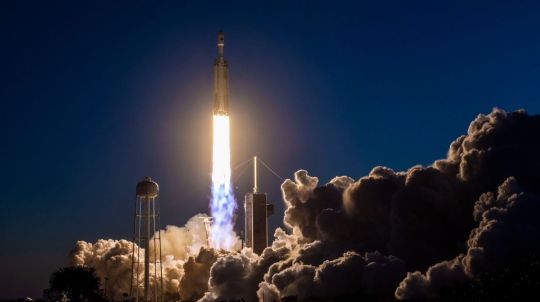
View On WordPress
#commercial communications satellite#Earth#Elon Musk#Falcon 9#Falcon Heavy#geostationary orbit#June 27#Jupiter 3#Kennedy Space Center#NASA#record-breaking mission#rocket#satellite#space#SpaceX#SpaceX Falcon
0 notes
Text
#Self-Defense Forces#SpaceX#Starlink#Satellite constellation#Trial basis#Japanese government sources#Communication capabilities#China#Russia#Attack satellites#High-speed communication service#U.S. space development company#U.S. military satellites#X-band communication satellites#Geostationary orbit#Private-sector satellite constellation#Ground-based jammers#Contingency#Operational issues#Military technology#National security#japan#tokyo#investment
0 notes
Note
hey um. what's geostationary orbit and why is it impossible for TAG's TB5 to achieve?
Hello!! I'm assuming you're coming in from the stack of memes I made lol so welcome welcome, this is my well-known pet peeve and I will happily explain because it involves my favourite subject - physics!
"Impossible to achieve" isn't quite accurate - my argument is formed purely on the observational evidence of where it is, such that when the show makes references to TB5 being in geostationary orbit it doesn't make sense because it's simply.... not.
So strap in, I'll go through this as clearly as I can but feel free to ask follow up questions :D Or just generally hang out lol TAG is a fun time despite the handwave-y physics ahaha :D
1. What is geostationary orbit?
Geostationary orbit is the specific orbit where a satellite/space station/whatever moves with the exact same period as the Earth's rotation i.e. 24 hours AND is placed so that the object is directly over the equator, it will move in that orbit at the same rate as the location it is over, so that it will always be over that position at all times. This gives it the name "geostationary", implying that the Earth doesn't move relative to the orbiting object, or if you look down you'll always see the same place.
Both conditions must be met for geostationary orbit to occur; an orbit with a greater or lower period will fall out of step with the Earth fairly quickly, and if not on the equator, you'll get a related type of orbit known as a geosynchronous orbit which will move up and down relative to the equator rather than staying put.
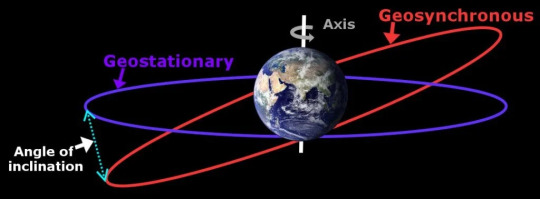
Furthermore, I won't take you through the calculation (1 | 2 | 3), but using Kepler's Third Law which is sufficiently accurate for this scenario, this orbit must always be ~36,000 km above the Earth, or the quoted 22,500 miles in the show. That is the main evidence in the show that implies that the writers intended for TB5 to be in geostationary orbit, like TOS was written to be.
However....
2. Why can't TB5 be in geostationary orbit?
It's not that it can't, it's that it isn't! There's two main reasons for this that I return to when grumbling about this to my friends (they are long-suffering on this point lol thank goodness they're reasonably good-humoured about it...)
Reason 1: The size of the Earth from TB5
This is the most damning evidence. Let's make some visual comparisons.
This is what the Earth looks like from the International Space Station which maintains an orbit about 400 km above the surface of the Earth (in a region known as Low Earth Orbit).
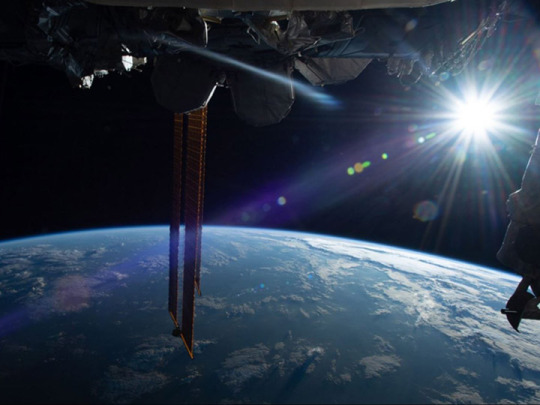
It's a little more complicated to show what Earth looks like from geostationary orbit as many satellites in this region are communication relays or broadcasting satellites (very appropriate for TB5 it must be said!!) But that being said, this is a full disk image of Earth from Japan's Himawari 5, a weather satellite in geostationary orbit.

Now take a look at the animation in TAG and decide for yourself what was being used as inspiration!

But I'm a physics nerd, so I won't take blind faith in some pictures! No, no - if there's a specific height that an orbit must maintain in order to remain in this orbit and the size of the Earth doesn't change, then it should follow that the Earth must be some kind of stable "apparent" size that we can figure out. Think about a freestanding house from 40 m away. It doesn't matter in which direction the 40m is, the house takes up the same space in our vision. The same follows here.
Once again, I'll gloss over the calculations ( 1 | 2 | 3) and simply state that from geostationary orbit, the Earth should take up no more than about 20° of our field of vision. In comparison the visual angle of the Moon is about 0.5° so it's still going to look really big!! But not as big as you'd see from the ISS :P If you make both hands into fists, place them next to each other and hold them at arms length from your body, that would be the approximately the width of the Earth from geostationary orbit.
So TB5?
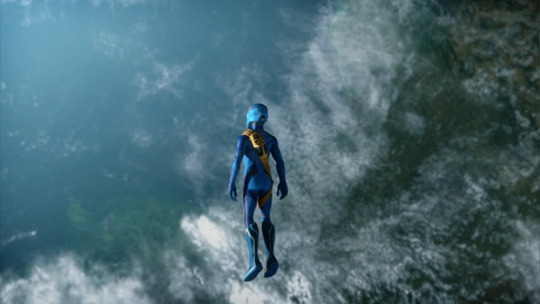
....might be a wee bit closer than that 😂
Reason 2: The locations on Earth
This one's a little looser, but it illustrates my second point - in order to be geostationary, TB5 needs to..... stay over one location? Like okay sure it has rockets and engines so that it's able to move around, we've seen them plenty of times. But that doesn't change that fact that even when these are not in use, TB5 is never in one place.
Here's some examples…
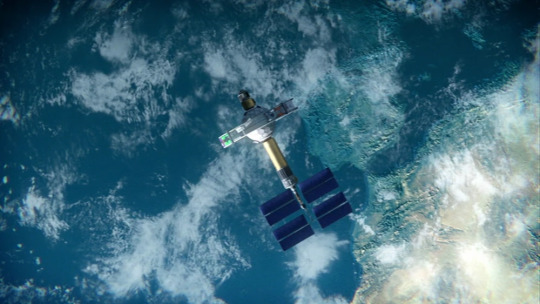
The Strait of Gibraltar (Spain and Morocco) | 1x07 (Runaway)

Looks like Japan in the background to me | 1x07 (Runaway)

Ireland and Great Britain | 1x08: EOS

Cheating a tad, but he's only just launched so it's reasonable to assume that here TB5 is over SE Asia | 2x02 (Ghost Ship)
None of these are examples where John's manoeuvred TB5 into position like he does in Skyhook (1x11) and Impact (2x09) so it's reasonable to assume that TB5 is following its assigned orbit... and its not geostationary!
Moral of the story: TB5 could be in geostationary orbit, there's nothing stopping it! But uh... it's not. Thanks for listening ;D
All images stolen either from the thunderbirds wiki, or I've attached a click through link to their origin :)
66 notes
·
View notes
Text
🆕 「 to you on geostationary orbit」 by cosmomule
Available for streaming worldwide!🌐
Added to our weekly playlist 🎧
https://spoti.fi/3lgjH73
0 notes
Text
Space Station Concepts: Space Operations Center
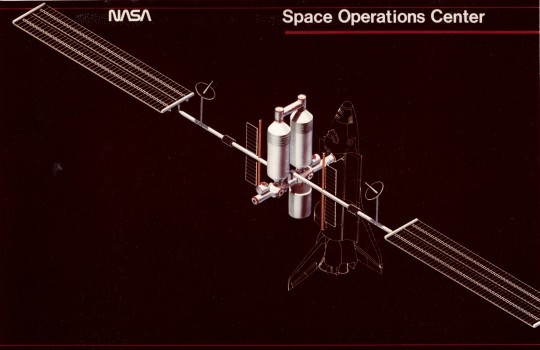

"The SOC is a self-contained orbital facility built up of several Shuttle-launched modules. With resupply, on-orbit refurbish- ment and orbit maintenance, it is capable of continuous operation for an indefinite period. In the nominal operational mode, the SOC is manned continuously, but unmanned operation is possible.

The present mission management and control process is characterized by a people-intensive ground monitoring and control operation involving large supporting ground information and control facilities and a highly- integrated ground-flight crew operation. In order to reduce dependence on Earth monitoring and control, the SOC would have to provide for increased systems monitoring; fault isolation and failure analysis, and the ability to store and call up extensive sets of data to support the onboard control of the vehicle; and the onboard capability for daily mission and other activity planning."
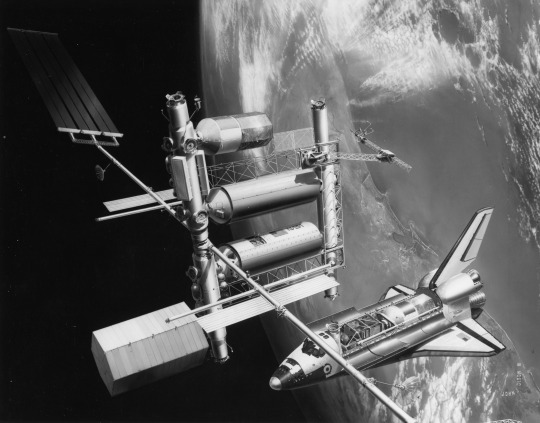

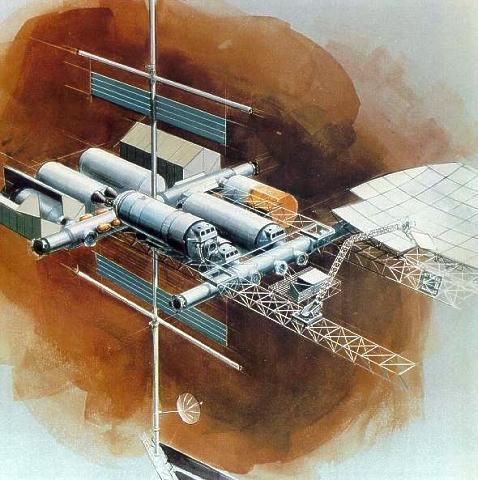
"Like most other space station studies from the mid/late 1970s its primary mission was the assembly and servicing of large spacecraft in Earth orbit -- not science. NASA/JSC signed a contract with Boeing in 1980 to further develop the design. Like most NASA space station plans, SOC would be assembled in orbit from modules launched on the Space Shuttle. The crew's tour of duty would have been 90 days. NASA originally estimated the total cost to be $2.7 billion, but the estimated cost had increased to $4.7 billion by 1981. SOC would have been operational by 1990.
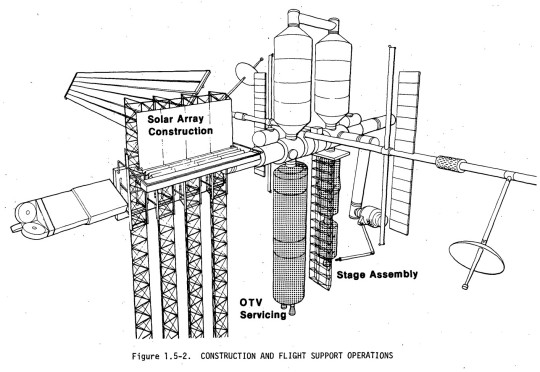
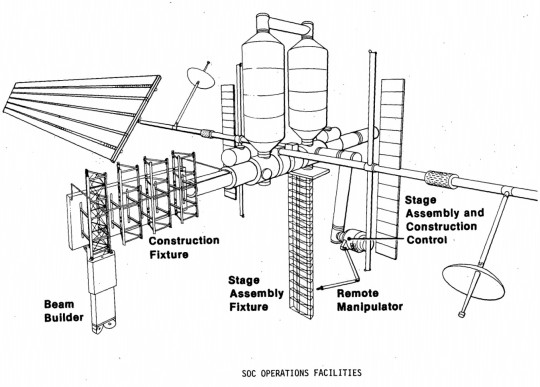

NASA's Johnson Spaceflight Center extended the Boeing contract in February 1982 to study a cheaper, modular, evolutionary approach to assembling the Space Operations Center. An initial power module would consist of solar arrays and radiators. The next launches would have delivered a space tug 'garage', two pressurized crew modules and a logistics module. The completed Space Operations Center also would have contained a satellite servicing and assembly facility and several laboratory modules. Even with this revised approach, however, the cost of the SOC program had grown to $9 billion. Another problem was Space Operations Center's primary mission: spacecraft assembly and servicing. The likely users (commercial satellite operators and telecommunications companies) were not really interested in the kind of large geostationary space platforms proposed by NASA. By 1983, the only enthusiastic users for NASA's space station plans were scientists working in the fields of microgravity research and life sciences. Their needs would dictate future space station design although NASA's 1984 station plans did incorporate a SOC-type spacecraft servicing facility as well."
Article by Marcus Lindroos, from astronautix.com: link

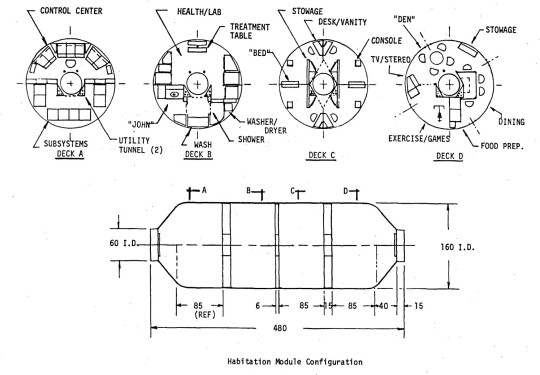


NASA ID: link, S79-10137
Boeing photo no. R-1859, link, link
#Space Operations Center#Space Station Freedom#Space Station Concept#Space Station#Concept Art#Space Station Program#Space#Earth#Space Shuttle#Orbiter#NASA#Space Shuttle Program#1979#1980s#my post
445 notes
·
View notes
Text
US authorities said they have issued a "breakthrough" first-ever fine over space debris, slapping a $150,000 penalty on a TV company that failed to properly dispose of a satellite.
On Monday the Federal Communications Commission (FCC) came down on Dish for "failure to properly deorbit" a satellite called EchoStar-7, in orbit since 2002.
"This marks a first in space debris enforcement by the Commission, which has stepped up its satellite policy efforts," the FCC, which authorizes space-based telecom services, said in a statement.
As the geostationary satellite came to the end of its operational life, Dish had moved it to an altitude lower than the two parties had agreed on, where it "could pose orbital debris concerns," the FCC said.
The commission said Dish, a US satellite television provider, pledged in 2012 to elevate the satellite to 300 kilometers (190 miles) above its operational arc.
But with fuel running low, it retired the satellite at an altitude just over 120 kilometers above the original arc.
Continue Reading
202 notes
·
View notes
Text
Lee Harvey Oswald fired two shots, one that killed JFK and the other achieved geostationary orbit until descending to also hit John Lennon.
2K notes
·
View notes
Photo

Temple of Malice
"Mothership will maintain Earth geostationary orbit. All systems fully operational. Attack Squad Delta, prepare to enter transmat."
Artist: Jokubas Uogintas
TCG Player Link
Scryfall Link
EDHREC Link
82 notes
·
View notes
Text

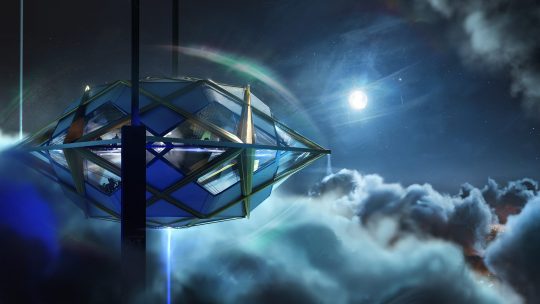
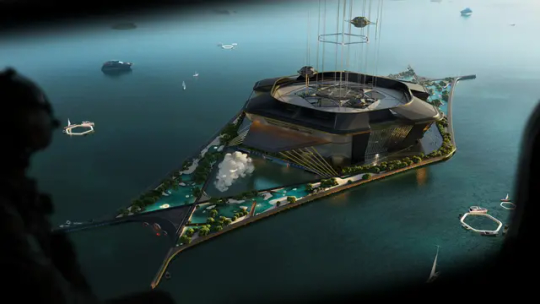






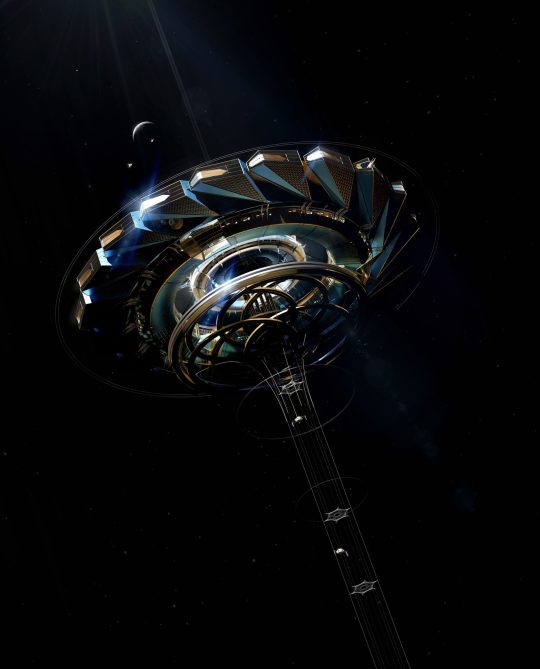
Jordan-William Hughes's 'Project Ascensio' Space Elevator
The concept is for an asteroid in geostationary orbit to serve as the counterweight for this spaceport. The elevator will be connected to the ocean through a robust tether that will transport it from the asteroid to Earth.
Drones will be able to go up and down the tether and be able to transport both cargo and people. The idea is for the space station to be more than 26,000 kilometers above Earth and then the spaceport here on our planet to be at sea-level.
#art#design#stairwell#stairway#lift#elevator#space#ascensio#meteorite#jordan willial hughes#concept#render#sci-fi#space travel#spaceport#drones#tether
39 notes
·
View notes
Text
Dr. Stone chapter 2D trivia post
Spoilers ahead !
Check out too, my trivia post for the previous chapter.

This changes everything, folks! however, we gotta start from the start.

Chrome's drawn this roadmap, and he seems to pretend to build yet another of his silly storehouse towers like he's done around the globe. Next stop, the moon.



This confused me for a while until it was pointed out to me that "EMU" stands for Extravehicular Mobility unit; which is what we normally call a spacesuit (and I call and EVA suit), and notably it doesn't look muck like these simple, yet decidedly comfy and cute looking jumpsuits.


The graphic depicted below actually shows two trips, if you follow the arrows along the lines, you can see the black ones show a trip from earth orbit to the moon, and the white ones show the return trip, landing in the middle of what loosely resembles the pacific ocean, east of Japan.

In other news, Suika joins the tradition of the space elevator, an idea that has been itching in the back of people's minds since the 1890's

The more detailed explanation of this is a bit more lenghty but I'll keep it simple, so buckle up.
The idea of a space elevator is that a weight with a cable tethering to earth, could keep it tense if the weight is moving too fast (so much so that if let loose it would escape into space, or at least a higher orbit).
This cable can support a vehicle going up along it, bringing any cargo within it to space, using much less energy and resources than a rocket.
How to make a cable that can support its own weight over such a huge distance is the main reason we haven't built one.

A problem that arises from this, is that if the weight doesn't match the rotation of the earth, the cable would get pulled around (eventually breaking or winding around the earth, pulling the weight down, as cartoony as that is), so we need it to hover over one spot.
Now we gotta talk about geostationary orbit, to make this easier.
So, when something is orbiting the earth, it needs to move really fast to combat gravity in such a way that the earth curves away from the object at the same rate it's falling towards it (spaceflight really is the art of falling to the ground and missing it, as the saying goes.)
The farther out you go, the weaker gravity's pull gets, and the slower the satellite needs to be in order to find this balance. Eventually it reaches the point where, if its flying around the equator, it will, at one point, match the speed of the ground spinning beneath, this is at 35786 km above.
Such a satellite appears still in the sky, which is very handy to, as a sidenote, aim a small TV dish at it, and just leave it in place, as you may have at home.
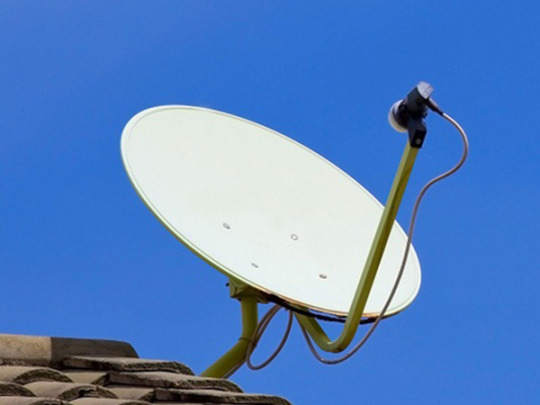
However one must notice that in a space elevator, the satellite (our weight) is not only pulled by gravity but also by the tension in the cable.
Since it's pulled in with a greater force, it falls faster than a normal satellite, and so it needs to also travel faster to avoid falling back to earth.
As a result, it also needs to be further away than a geostat satellite, so it needs to travel a longer way around the earth, and again find the balance of speed with rotation, staying still in one spot while keeping the cable taut.
This is why the weight is shown beyond geostationary orbit here. Yes, this was a long winded explanation for just that.

And after all that, here we all are, ignoring the fact that suddenly petrified hair is flexible.

Perhaps it's like glass fiber / glass wool, and it can be flexible when it's thin enough (yes, glass fiber is just glass but thin, if you weren't aware. Incidentally, most glass fiber is made by a process that works the same as a cotton candy machine... wait this was already shown in Dr. Stone, fu-).
This however doesn't explain how this flexibility hasn't been observed in statues before. Maybe her hair is special after all.

Also special is spider silk, although sometimes overhyped by the media. Spider silk has some outstanding mechanical properties, it's very durable, and it can take a lot of tension and deformation before breaking.


Ruri here makes a reference to her previously stated occupation after the main series. A lot of people took issue with the aftermath of the characters in general, myself included. Still mad at Kohaku joining the police, I'm pretending that didn't happen.

This might be an autism 100 take, but the wheels in this cart are backwards. The flanges should be on the inside, and the taper should be towards the outside.
This geometry helps railway wheels stay on the track, go around bends, and not have to constantly abuse the flanges to not fall off the rails.
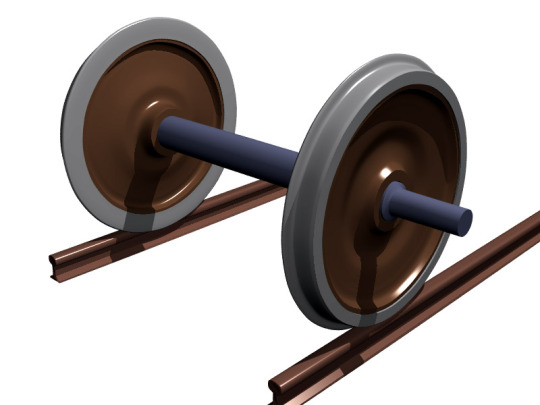

The silk road... I really am just googling basic things for you, am I?
It was an ancient trade route network joining asia with the middle east and europe. Silk was one of the most famous products traded through the network.
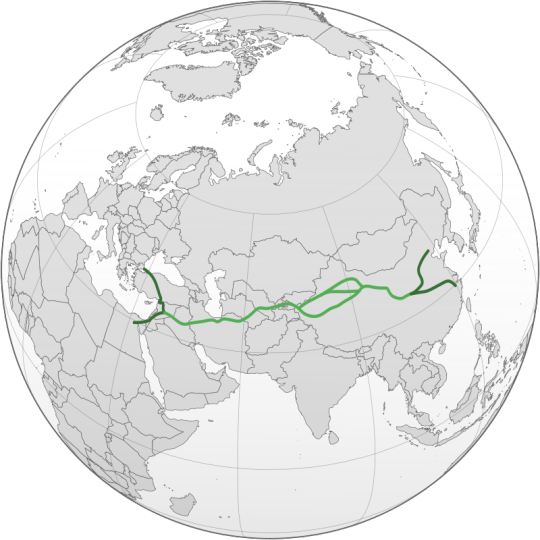
yeesh, I've been typing this for ages (tumblr logged me out while I was writing this post and lost like half of it), and I haven't even gotten to talk about induction motors yet.

A linear motor is just an electric motor that rather than making something spin, it pulls itself along some sort of guide rail. These are in use in some trains but they are not common, the infrastructure cost is much higher than a normal railway.
Why am I talking about trains again...
One way to make it work is by induction.

The tl:dr is that when a magnetic field is moving through a conductive object, it can effectively drag it with it to an extent.
The reason this happens is called Lenz's law; the variation of the magnetic field through the metal causes an electric current to flow through it.
This current, just like an electromagnet you may have put together in science class, produces it's own magnetic field that interacts with the one coming from outside, hence making the metal react, but only when the field is moving or otherwise changing.
A big advantage is that there needs to be no contact between the source of the field and the moving metal; this is used in all sorts of electric motors even in homes, you'll find them in fans, refrigerators and washing machines, etc.

The train/motor would have a magnetic field underneath with a north-south-north-south-... pattern, which flows towards the back like a river (made by a lot of electromagnets switching in coordination).
As the magnetic river flows backwards, the induced currents in the rail produce their own magnetic field in opposition, pushing the train forward.
How viable is it to use this on a thin cable that needs to pull itself up is another story, and I have my doubts. The electronics involved would be really complex, costly and perhaps even unwieldy, but at least the conductive cable can also be used to deliver power to the elevator with some tweaks.

The structure they begin constructing for the full size elevator is named after the 1979 novel "The fountains of Paradise" by Arthur C. Clarke, in which a space elevator is also constructed.

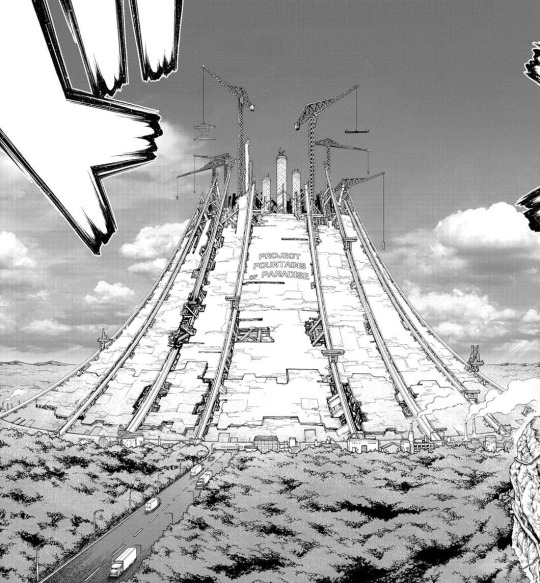
So, we've made it to this part. As far as I've seen this one panel has been the focus of like 50% of the discussion regarding this chapter.

We all see what he's doing whether we acknowledge it or not; Inagaki should know that you cannot build a relationship on just standing close and gazing with passion; believe me I checked, multiple times.
Wouldn't mind if he hadn't procrastinated on developing Senku's side, the girl has wanted her vegetables since day two (but not day one)



And now, things get really messy, as some mind boggling events lead Ryusui to ask "why, man?"
Look, I've already added 30 images to this post, and I imagine you have seen how this chapter ends, if you haven't, buddy what the heck are you doing here.
Have some emoji, I'm not gonna make a second post about this.
🥨✨🦟 ⁉️👱🏼♂️🏴☠️ 👨🚀☠️??
You may be confused, you should.
But after a while I came to a conclusion that I feel is pretty solid, and you may have seen it in the post from earlier.
To summarize:
Ryusui noted that things were going suspiciously well for them, and the sudden disappearance of mosquitoes in the Kanto region ticked him off to something.
He sent people to search and indeed found that mosquitos have been petrified within the region, and questions whyman about it, going as far as accusing them of pretending to be Byakuya from the future.
That's where we are left.
The medusa is fully capable of faking the signal they received from "Byakuya". The receiver only detected bursts of petrification beam presumed to be from the future and decoded them as morse code, and it was noted by Balb on discord that if you trace a circle with the center near Tokyo (where the lab keeping whyman is) and a radius reaching as far as Fuji, where they received the message, the circle covers the majority of the Kanto region as stated.
The bursts of petrification would have been invisible to humans, as only the affected species can see them.
So it is assumed that the mosquitos were petrified as a means for whyman to send the fake signal all the way to Fuji, depleting its diamond battery in the process.
However I believe it's also possible the mosquitos were zapped later to make work easier for the people building the space elevator as noted by Kaseki.
Several months if not more must have passed since the Byakuya message and whyman being caught (enough for Kohaku's hair to regrow), and it would be odd that no one would have noticed the lack of mosquitos, their petrified bodies, or the effect their absense would have in the ecosystem.
So why do any or all of this?
Well we know what whyman is largely motivated by, its survival and the spread of its kind across the universe.
So I think it's trying to accelerate human progress for that purpose, so we eventually get to the point where more medusas can be made, or who knows, maybe even succeed in warning the past ones with the time machine.
I also think it's likely this misunderstanding is gonna fizzle out once some dialog is made and Senku basically says yes to that goal too.
Will we get a triple twist and find that the Byakuya message was real after all, and the mosquitos were a separate event?
Will the sengen and kohasen crowds envelop the world in thermonuclear hellfire?
And will this be the true final end of Dr. Stone? hard to tell, but the answers may come next week.
Goodnight.
#dr. stone trivia#4D Science#dcst#Dr. Stone 2D#dr stone#dr. stone#drstone#dcst senku#byakuya ishigami#dr stone senku#senku dr stone#senku ishigami#dcst kohaku#dr stone kohaku#kohaku dr stone#dcst suika#dr stone suika#suika dr stone#dcst gen#dr stone gen#gen dr stone#dcst chrome#dr stone chrome#chrome dr stone#dcst kaseki#dr stone kaseki#kaseki dr stone#dcst ryusui#dr stone ryusui#ryusui dr stone
49 notes
·
View notes
Text
arbor beast lore/setting/world building:
the homeworld of arbor beasts is a very rocky and mountainous moon that orbits a gas giant in a system with a lone star. this moon has a region of particularly high elevation where many plateaus connect. these plateaus form a sort of high elevation "island" that rises above the thick layer of mist that covers most the surface of the moon. below the layer of mist is a largely unseen area with much geothermal activity. upon the plateaus are rough and expansive plains, as well as dense forests with immensely huge trees. the plains are relatively dry, only becoming wet with large storms that make their way above the mists. these plains have rugged, dull colored plants that have adapted to these conditions. in wetter weather, they bloom many colors. large, grazing animals are the most prominent creatures here. in the forests, the bark of these trees is grey like graphite. many vines and parasitic plants grow from the massive trees. at the top are wispy, fluffy tufts of foliage, ranging in color from reds, to oranges, to dark purples. these dense tufts insulate the forests at this high elevation by trapping heat and moisture from the geothermal activity below. these forests are home to many different forms of life, and is where arbor beasts make their homes.
overall, these plateaus make up very little of the surface of the moon. it's where the most delicate life on the moon resides, and has little direct interaction with the ecosystem down in the mists below. but below in the mists, there are large creatures that gather around and feed on the detritus that falls from the forests and plains. nutrients are able to be brought back up to the plateaus primarily by the tree roots that extend deep down into the mists, collecting from the nutrient rich slurry created by the creatures and bacteria that live in the wet, geothermic environment there.
this moon has a smaller moon of its own. it rests in a geostationary orbit above the plateaus. between this smaller moon and the large gas giant, the sun is often eclipsed and a typical cycle of day and night isn't so straightforward.
this is the physical overview of the arbor beast homeworld. it's a rather insignificant moon that'd be easy to miss. it's rich with bacterial growth, but on it are patches of more complex life that thrive in unusual ways.
17 notes
·
View notes
Text
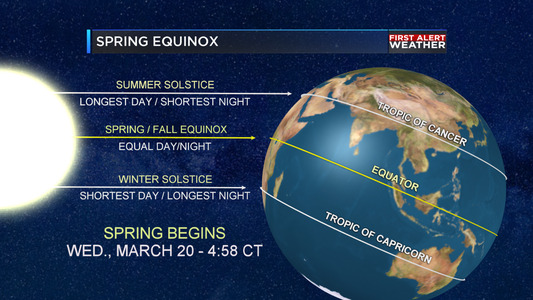
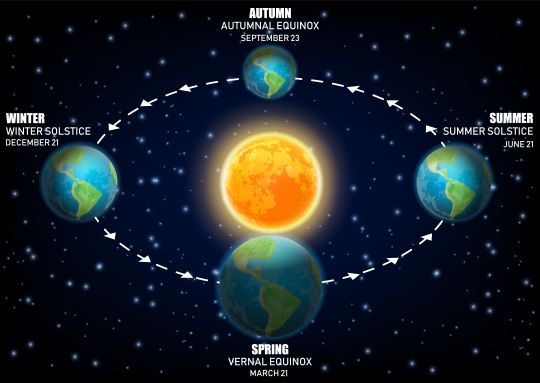
youtube
Spring is here: NOAA satellite animation captures vernal equinox
Spring has officially arrived in the Northern Hemisphere, while the Southern Hemisphere is embracing autumn. The start of astronomical spring, known as the vernal equinox, occurred yesterday, March 19, 2024, at 11:06 p.m. EDT.
During equinoxes, which happen twice a year, the Earth's axis is not tilted toward or away from the sun, resulting in nearly equal periods of daylight and darkness worldwide. The term "equinox" is derived from Latin, meaning "equal night," indicating the balance between day and night during these events.
At the equator, the sun shines directly overhead at noon during equinoxes due to this alignment. The "nearly" equal hours of day and night is due to refraction of sunlight, or a bending of the light's rays, that causes the sun to appear above the horizon when the actual position of the sun is below the horizon. Additionally, the days become a little longer at higher latitudes farther from the equator, because it takes the sun longer to rise and set.
Seasonal changes are driven by the Earth's axial tilt of 23.5 degrees as it orbits the sun, exposing different hemispheres to varying sunlight angles and durations throughout the year. Equinoxes mark the moments when the sun rises due east and sets due west for most places on Earth.
This animation was created by taking one GeoColor image a day for a year from GOES East, captured at 11:50 UTC each day, and stringing them together.
In the Northern Hemisphere, meteorological spring is based on temperature cycles and runs from March 1 until May 31, while astronomical spring shifts to summer on the summer solstice, which this year will occur on June 20 at 4:50 p.m. EDT.
NOAA's GOES-16 and GOES-18 satellites, positioned above the equator, track the Earth's surface and observe the terminator—the edge between the shadows of nightfall and the sunlight of dusk and dawn—providing insights into seasonal changes throughout the year. The slope of the terminator curve changes with the seasons. During an equinox, the terminator is a straight north-south line over the equator.
From their position 22,236 miles above the equator, the GOES satellites orbit at the same rate Earth rotates, so they can keep constant watch over the same region. The GOES East geostationary satellite, also known as GOES-16, keeps watch over most of North America, including the contiguous United States and Mexico, as well as Central and South America, the Caribbean, and the Atlantic Ocean to the west coast of Africa. The GOES West satellite, also known as GOES-18, provides geostationary satellite coverage of the Western Hemisphere, including the United States, the Pacific Ocean, Alaska and Hawaii.
10 notes
·
View notes
Text
Unfinished Timeline for an Untitled Setting
Critique and advice is more than welcome, though please be nice about it. Goes up to about 2081 rn, though I plan to get at least another 50 years further in before I get to the time I want the bulk of the setting to be set in.
Timeline:
2022: First controlled break-even fusion reaction, followed by first controlled net-gain fusion reaction.
2025-2026: Increasing unrest in USA leads to mass riots outside the white-house. Sweeping reforms after growing revolts threaten to become a major armed rebellion. NASA miraculously left untouched, general increase in standard of living. Economic crisis narrowly averted.
2027: First nuclear thermal rocket (NTR) tested in orbit by NASA and DARPA. GPT-style language modeling declared “dead end” for self-aware AI.
2030: First Lunar base established under NASA Artemis program. Suez Canal temporarily blocked by a poorly driven cargo ship again. Evergreen Shipping goes bankrupt.
2034: Lunar Gateway established under joint NASA, ESA, JAXA, DLR, ASI, and CNSA. Lunar helium-3 mining declared officially nonviable. Radial detonation engines become standard for lower ascent stages, SpaceX Starship, NASA SLS, and Roscosmos Soyuz phased out. Drop in launch prices.
2034-2036: Additional modules added to the Lunar Gateway from SpaceX, KARI, ISRO, and Roscosmos. Lunar Gateway Collaborative Group (LGCG) established consisting of all current contributors to the station.
2036: First commercial fusion energy plant reaches full operation in France under ITER. Mass production of Tritium begins. First fully private space station under SpaceX. Asteroid mining corporations begin formation. Establishment of Nigerian Organization for the Development of Space (NODS). Ecuador experiences communist revolution.
2036-2037: First manned martian mission under LGCG, first human footsteps on another planetary body.
2037: Elon Musk assassinated. New SpaceX leadership declares plans for space elevator. North Korea collapses, Korean peninsula unified under South Korean leadership, becoming simply Korea. Indian nuclear stockpile secretly surpasses 50000 Gt. First baby born on the moon.
2040: Artemis base becomes semi-self sufficient, producing it’s own food and air from hydroponics, and water from mined lunar ice. Lunar LH2 and hydrolox production begins. Lunar population passes 100.
2040-2042: First commercial fusion power plants established in the US, UK, Australia, Korea, and Japan.
2042: A joint US Government and SpaceX black operation destabilizes Ecuador, leading to a corporate takeover of the territory.
2044: Korea, Japan, the Philippines, Vietnam, Malaysia, Indonesia, Papua New Guinea, Australia, and New Zealand form West Pacific Trade Organization (WPTO). Construction of the base of SpaceX’s planned space elevator begins off the coast of Ecuador.
2047: LCC completed at CERN. Mission for permanent martian base declared. Major economic crisis in China, intervention from several megacorps results in a decrease in Chinese government power and increase in corporate control in the region. SpaceX space elevator counterweight construction begins in geostationary orbit.
2048: Major revolution in quantum mechanics brought on by new data from the LCC. Lunar population passes 250.
2050: China splits into 4 corporate states, Amazon Corporate Territory (ACT) with its capitol in Chongqing, Samsung Independent State (SIS) with its capitol in Shanghai, Territory for Electronic Developments (TED) made up of Apple and Microsoft with its capitol in Yinchuan, and the Chinese Corporate Union (CCU) made up of several formerly state-owned corporations with their capitol in Wuhan and possession of the Three Gorges Dam. Beijing becomes an independent city-state controlled by the former Chinese government, retaining control over the CNSA. Massive revolution in battery energy density. Permanent martian base established by LGCG.
2051: Breakthrough in photon manipulation, beamed energy and solar collection becomes increasingly viable. Many asteroid mining corps branch into solar power, notably Binghamton Vacuum Mining Solutions (BVMS). Lunar population passes 500.
2052: Martian population surpasses 100.
2053: Martian base reaches semi-self sustainability.
2055: All 4 Chinese corporate states and the Beijing city state form the Chinese Federation for Space Exploration (CFSE), supplanting the old CNSA. Lunar Gateway module renamed and LGCG roster amended accordingly. SpaceX space elevator cable completed, first test cart sent to GEO. WPTO begins construction of a space elevator in the Banda Sea.
2056: SpaceX space elevator declared complete, commercial operation begins.
2057: BVMS surpasses $1T in net worth, becomes primary supplier of energy for the Artemis Lunar Base. Lunar Population surpasses 1k, massive migratory population surge begins following influx of energy from BVMS. Martian population surpasses 250. First fusion reactor in Ecuador.
2058: WPTO space elevator counterweight begins construction in GEO.
2060: First fusion reactors in Nigeria and India. First large-scale solar collector on Earth constructed in New York operated by BVMS. Large population surge in Binghamton NY. Lunar population surpasses 5k. Martian space station established. Regulations for GEO development established.
2061: First lunar-built spacecraft flown. Secondary lunar settlement founded by CFSE. Massive influx of funds for the WPTO space elevator from the CFSE, GEO counterweight construction begun. Lunar Gateway population surpasses 100. First fusion reactor in the Democratic Republic of the Congo (DRC), Congo space agency (DRCSA) founded.
2064: WPTO space elevator cable completed, declared complete and opened to commercial operation.
2065: BVME establishes unmanned Mercurian base. CFSE settlement population surpasses 100. Martian population surpasses 500. Lunar Gateway population surpasses 200.
2066: Mass expansion of Artemis Base life support systems using BVMS produced automated construction equipment. Aerostat scientific outpost established by LGCG.
2067: Microbial life discovered on Venus. Venus outpost (and LGCG) acquires substantial funding boost. Artemis base population surpasses 2.5k and begins to plateau.
2069: Unmanned mission to Europa announced by LGCG, plans to use BVMS automated platforms to drill into subsurface ocean established. Martian base purchases automated construction equipment from BVMS, massive population boon ensues. CFSE settlement population surpasses 750. Lunar gateway population surpasses 500. Martian base population surpasses 500. BVME becomes the largest corporate entity in the system.
2070: BVMS performs feasibility study on gas giant aerostat mining platforms.
2071: Study of Venusian lifeforms disproves Earth-Venus panspermia.
2073: BVMS tests laser-sail propulsion on small unmanned craft.
2075: LGCG Europa mission discovers multicellular aquatic life in Europa’s subsurface ocean. Plans for a dedicated research base drafted.
2076: Multi-corporate base established on Ceres to facilitate further asteroid belt mining. BVMS intentionally excluded from this project.
(System effectively split into quarters: Past Venus under BVMS, Between Venus and Mars under LGCG, belt under Multi-corporate mining control, outer system unclaimed.)
2077: GEO-Lunar cycler niche mostly filled by Intraplanetary Transport Services corp (ITS).
2080: Permanent scientific base established at the Europa Breach Point (EBP) with mostly automated systems and a small (5 human) management and maintenance crew.
2081: Panspermia further disproved by study of Europan life. Massive object detected in Jupiter’s lower atmosphere. BVMS begins mission to establish a mining aerostat on Saturn, utilizing laser sail propulsion to transport equipment.
(Saturn Aerostat site intended for use in the further colonization of the outer solar system and the Uranus planetary system itself. Atomic Rockets page)
8 notes
·
View notes
Text
Ok SO I’m taking some orbital mechanics and aerospace classes right now and we’re learning about different orbits and what they’re used for. Low earth orbit is generally used for observation satellites, medium earth for navigation, and geostationary is where a lot of the broadcasting satellites are. As previously mentioned, I am experiencing terminal levels of Mad Max Brainrot.
SO:
With the Vuvalini, when they see the satellite, it is moving. Geostationary broadcast satellites, like the ones that would be broadcasting the shows, don’t appear to move in the sky. You know what does? Lower earth orbit observation satellites. You know what’s also in low earth orbit? The ISS. That could very well have been a tin can full of corpses they were reminiscing at.
#did this make any sense to anyone but me#the only way I’m getting through this class is by associating it with my current fixation#mmfr#mad max fury road
7 notes
·
View notes
Text
Why does Elon Musk need so many satellites?
Starlink satellites consist of approximately 5,400 operational spacecraft in Earth orbit, and this number continues to increase. The company aims to carry out 144 more missions in 2024.
Where are Starlink satellites now?
While normal satellites sending TV signals move in a high orbit called geostationary, 35 thousand kilometers above the earth, Starlink internet satellites are in the closest orbit to the earth, approximately 550 kilometers above the earth.
Starlink is defined as a satellite constellation built to provide satellite internet access, operated by SpaceX, a company owned by Elon Musk. While SpaceX has placed other satellites so far, it has placed its own telecommunication satellites into space with the Starlink Project.
5 notes
·
View notes